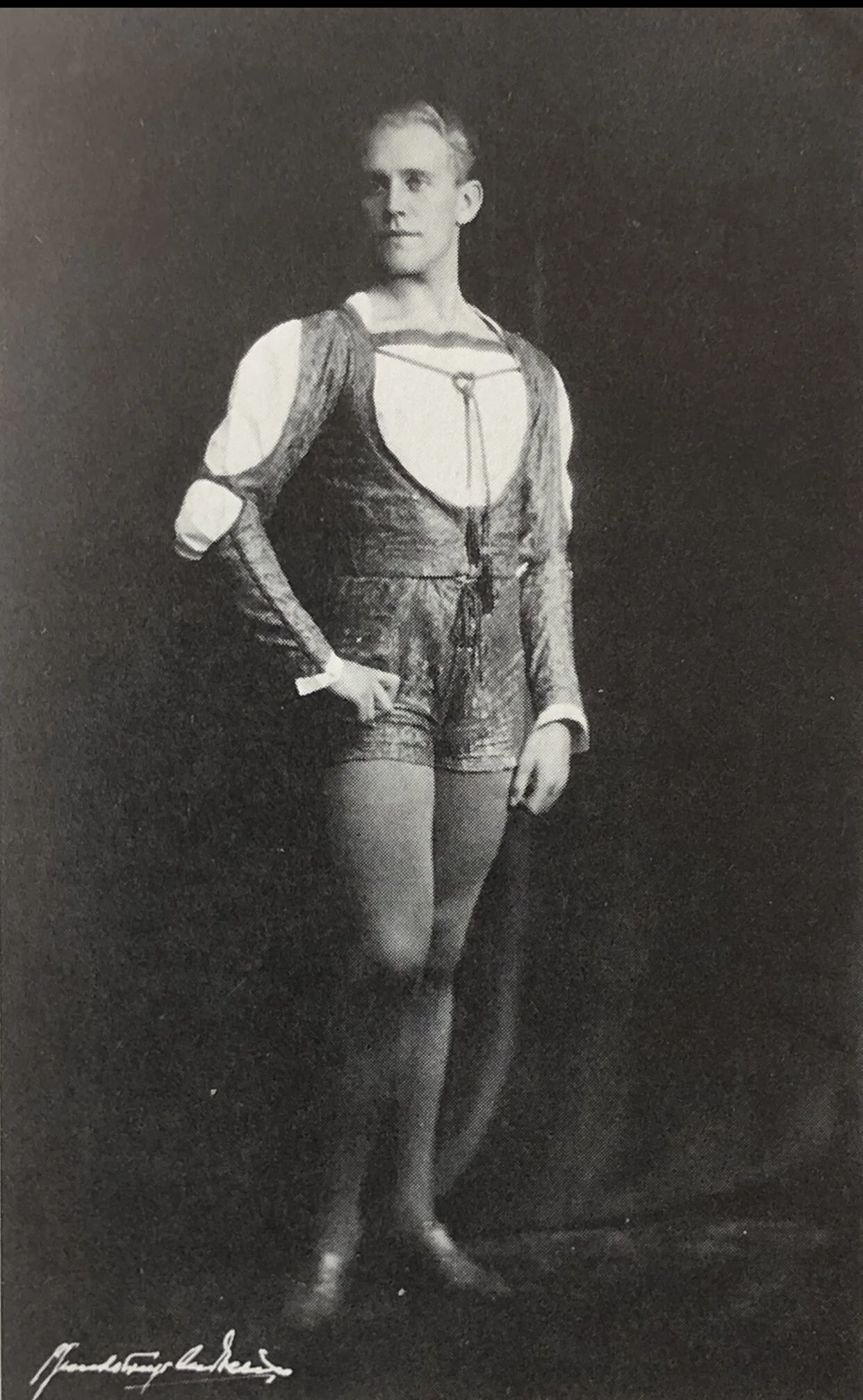Denmark’s first Balanchine Apollo, Peter Martins’s uncle, Leif Ørnberg
1, 2, 3. Three photographs of the Danish dancer Leif Ørnberg (1904-1977), the first Danish interpreter of the title role of George Balanchine’s Apollon Musagète and subsequently uncle to the more celebrated Peter Martins. 1 is the photo of him (with his family name spelt as Ornberg), possibly in August Bournonville’s A Folk Tale - as illustrated in Martins’s 1982 autobiography Far From Denmark. His sister, Tove Christa Ørnberg, a pianist, married Børge Martins, an engineer; their son was Peter Martins, who sometimes related that Balanchine remarked “You’re a better dancer than your uncle, but he was better looking.” 2 and 3 (photographs by Huset Mydtskov) show Balanchine’s 1931 Royal Danish Ballet production of Apollo, Leader of the Muses in Copenhagen. Else Højgaard is Terpsichore, Margot Florenz Gerhard (later Margot Lander) is Calliope, Gertrud Iversen (later Gertrud Jensen) is Polyhymnia, with Ørnberg as Apollo. Ørnberg was Balanchine’s second Apollo anywhere after the 1928-1929 original Serge Lifar.
In 1932, Ørnberg married the Danish ballerina Elna Jørgen-Jensen (1890-1969, née Elna Lauesgaard, sometimes also named as Elna Fobian). Her second husband, he was fourteen years her junior; she was not only a dancer of prestige but also a choreographer. (See 4.) In the War, they became known as Nazi collaborators, at a time when Copenhagen had some outstanding examples of artistic resistance to the Nazis. (The Royal Theatre there dared to stage Porgy and Bess in 1943. The Gershwin Estate was so impressed that, after the War, it gave the Royal Theatre unique permission to stage Porgy without black performers. There has been a Resistance Museum in Copenhagen since 1957.) Perhaps in consequence, the Ørnbergs left Copenhagen in the late 1940s for Madrid, where they set up a ballet school. Peter Martins was born in 1946. Although he mentions his uncle in his autobiography, he may not have known him in Copenhagen, if at all.
Tuesday 10 August
1: Leif Ørnberg (1904-1977). This photograph, reproduced in Peter Martins’s autobiography Far From Denmark (1982), possibly shows Ørnberg in August Bournonville’s ballet A Folk Tale (1854).
2: Else Højgaard is Terpsichore, Margot Florenz Gerhard (later Margot Lander) is Calliope, Gertrud Iversen (later Gertrud Jensen) is Polyhymnia, with Leif Ørnberg as Apollo in George Balanchine’s 1931 Royal Danish Ballet production of his Apollo, Leader of the Muses (1928). Photograph: Huset Mydtskov.
3: The concluding image of George Balanchine’s 1931 Royal Danish Ballet production of his Apollo, Leader of the Muses, with Leif Ørnberg as Apollo. The tableau clarifies that Apollo alone is departing for Mount Olympus, with his father Zeus’s horse-drawn chariot ready to take him there, while the three muses pay him farewell. His mother Leto, unseen since the Prologue, falls back, into her handmaidens’ hands, in awe and loss as her son departs to join his father and the other Olympian gods.
4. Elna Ørnberg and Leif Ørnberg. I’m grateful to Juan Bockamp for sharing this photograph.



